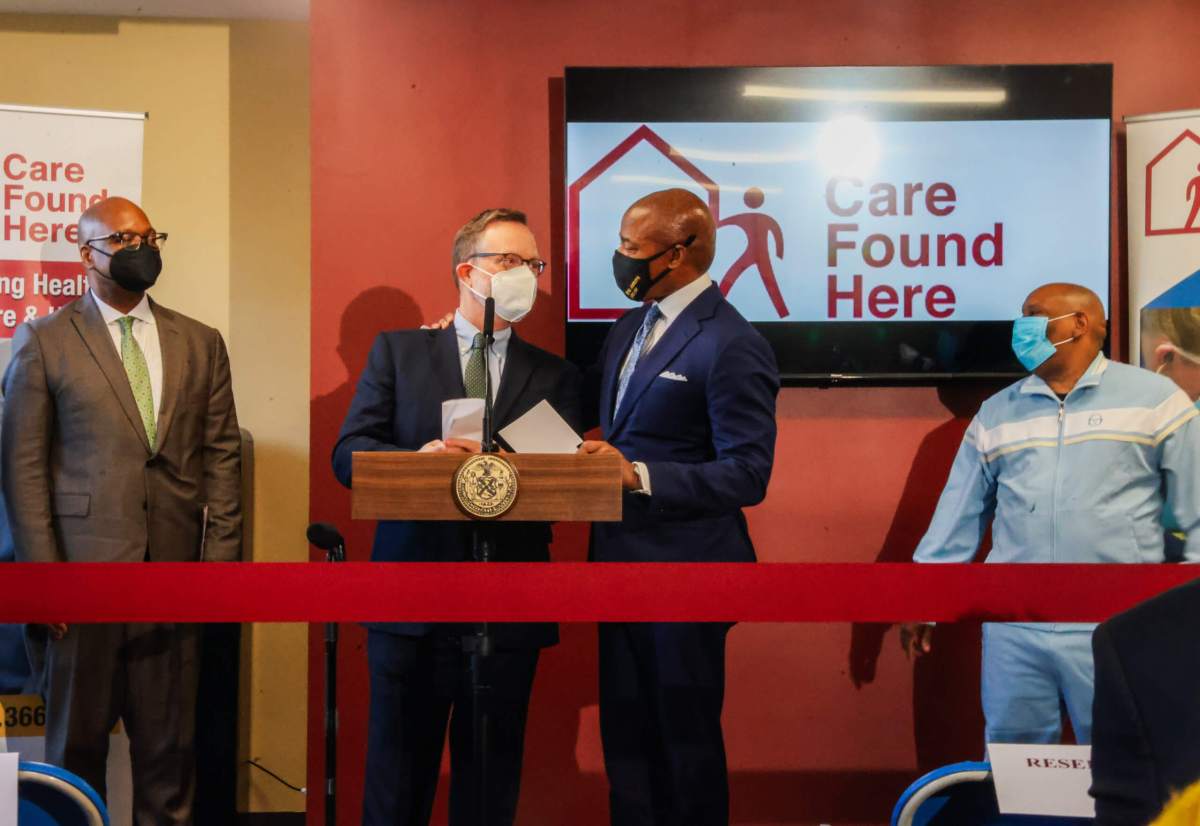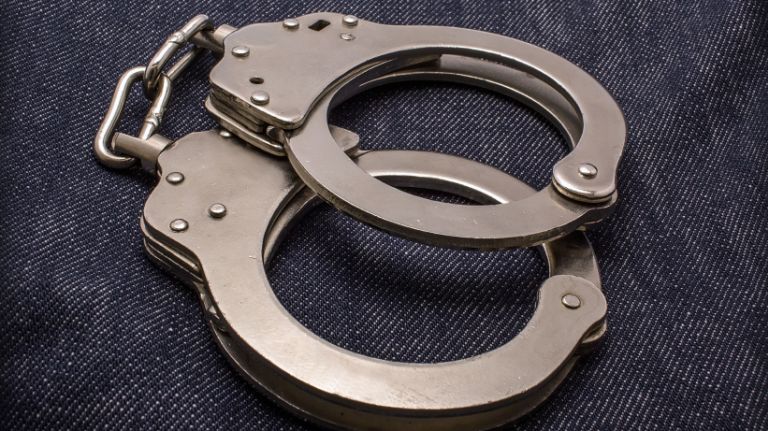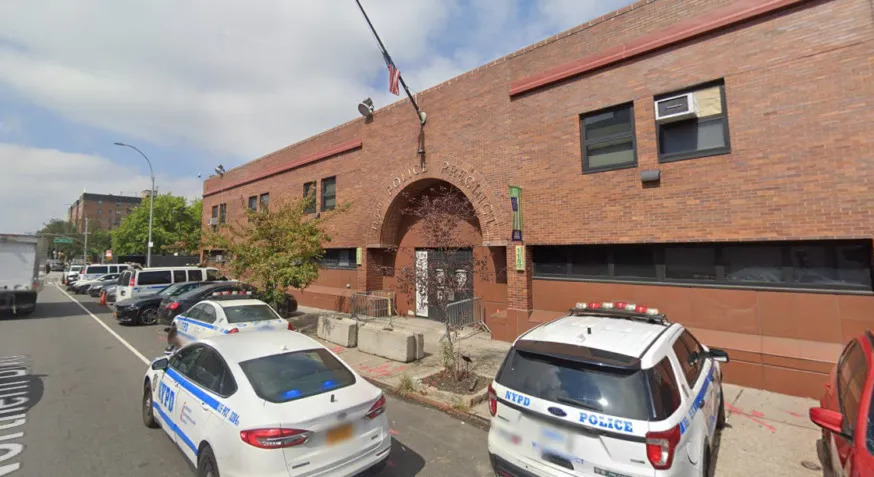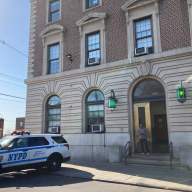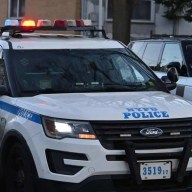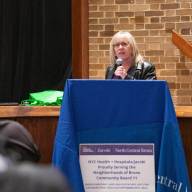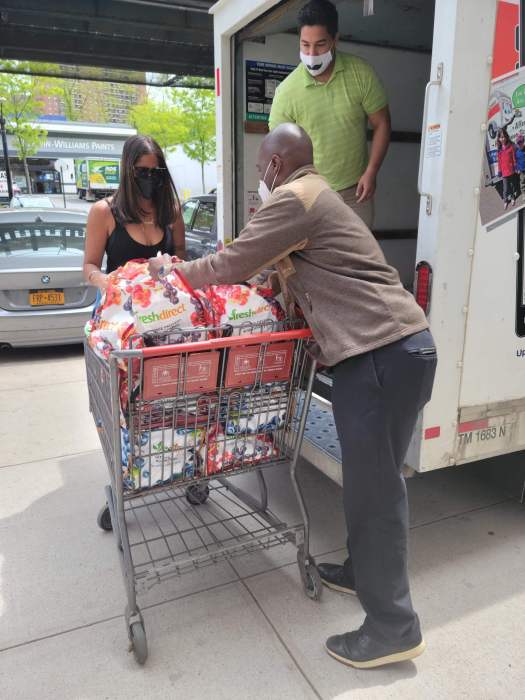As he continues a two-week blitz to dismantle 150 homeless encampment sites across the city, Mayor Eric Adams defended his administration’s handling of NYC homelessness Tuesday while unveiling a new 80-bed safe haven homeless facility in the South Bronx.
“We know we’re on the right path … and we’ve normalized people living on the street in cardboard boxes,” he said. “I know folks are critical and saying ‘there goes that po-po’ … but at the end of the day when you finally notice that you’re not going to have encampments everywhere, people on your streets everywhere, you’re going take this moment and understand I made us a healthy city.”
Adams, who was on hand to cut the ribbon unveiling the Morris Avenue Safe Haven facility — located at 528 Morris Ave. in Mott Haven and operated by Care For the Homeless — said the facility is proof that his administration is on the right track in addressing homelessness.
City partners said that the safe haven will be a place where unsheltered individuals can receive food, bed space and access to social services and support systems in an effort to secure long-term housing. City Councilmember Rafael Salamanca, whose legislative district includes the South Bronx, said that while he had doubts of another shelter in his district, he was won over by the on-site access to social services and medical care.
However, the Adams administration’s handling of rising homelessness in NYC — which advocacy groups say has been fueled by housing insecurity and rising rents — has been mixed. Adams said that criticism of his plans are due to a “lack of trust” and a city that has normalized homelessness.
As task force officials have visited more than 150 locations to offer shelter and services before giving homeless residents 24-48 hours notice to vacate upon first contact with city agents, some have balked at the mayor’s aggressive homelessness strategy.
The Coalition for the Homeless criticized Adams’ homelessness plan, which also includes mass removal of homeless individuals from city subway stations amid a rise in transit-related crime, as “tired and cruel.” Others applaud Adams for doing “something” about homelessness, but note that his solution seems to pushing more homeless people into the Bronx.
“I mean there’s been evidence that having people sleeping all over the street and yelling at patrons on our trains is no way to live,” said Raymond Jones, a transit worker in the Bronx. “People are getting attacked by scared, confused homelessness people … but I think (Adams) is just pushing them to the Bronx and making it our problem, not Manhattan’s.”
In the Bronx, community boards and residents have grappled with an influx of transitional living facility proposals in recent months. By their last count in November 2021, city Department of Social Services (DSS) told the Bronx Times that 111 of the city’s 249 transitional living facilities are sited in the Bronx, with high concentrations of shelters in the west and South Bronx.
Citing increasing homelessness among Bronxites, DSS officials told the Bronx Times their facilities are sited to ensure those in the shelter system are close to their support systems and familiar surroundings.
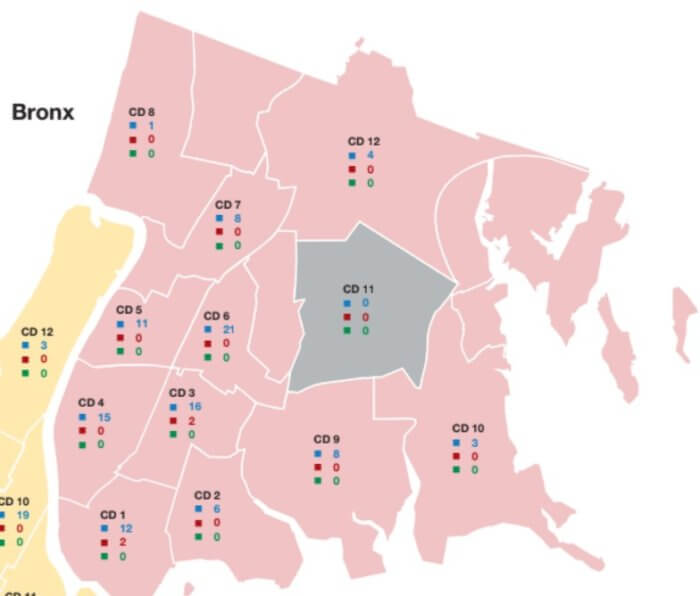
In the west Bronx — a four-community district region that includes Fordham, Belmont, Bedford Park and Kingsbridge — there are 63 shelters within the area’s 21.23 square-mile limits. In South Bronx-based community districts 1, 2 and 3, which span the neighborhoods of Melrose, Hunts Point and Morrisania, 38 facilities are sited within 6 square miles.
“That number has gone up,” said one Community Board 3 member who declined to be named. “We’re trying to do the best we can to address homelessness in the area, but it seems like DSS is only interested in siting a shelter here and then walking away.”
Community boards do not have a formal review process for shelters. The Bronx Times previously reported that DSS notifies communities of their shelter plans at least 30 days before a potential opening, and under the Turning the Tide plan have provided a combined average of 259 days notice.
The 10 community districts with the highest concentration of these facilities are Queens 14, Manhattan 11, Bronx 3/6, Bronx 11, Bronx 8, Bronx 1/2, Bronx 4 and Brooklyn 16, all of which are predominately Black and brown communities.
More than 60,000 people stayed in a municipal shelter in January. A bulk of the city’s DSS shelter population are families with children, nearly all of them Black or Latino, City Limits reported.
According to DSS, roughly 70% of city shelter residents are families with children, and the vast majority of those are headed by single mothers, according to DSS. About 15,000 school-aged children — the 4-17 age range— stay in city shelters each night.
One of the biggest efforts by DSS has been to prevent the clustering of homeless shelters in the city, a reversal of a 21-year-old Giuliani-era cluster program; the agency said they closed or repurposed 3,650 cluster units completely by Oct. 30, 2021. DSS data doesn’t give the full scope of homelessness, as it excludes facilities such as faith-based, youth centers and overnight drop-in centers, which excludes an estimated 4,000 New Yorkers who sleep on the street each night.
Reach Robbie Sequeira at rsequeira@schnepsmedia.com or (718) 260-4599. For more coverage, follow us on Twitter, Facebook and Instagram @bronxtimes.

